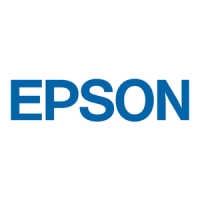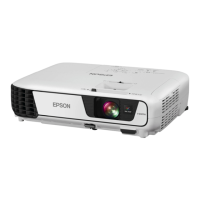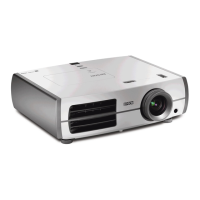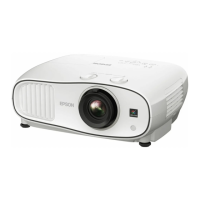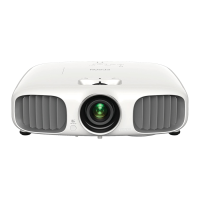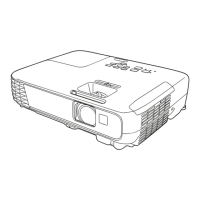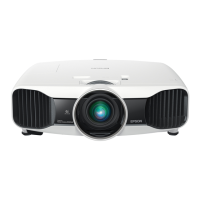Do you have a question about the Epson PowerLite Home Cinema 2045 and is the answer not in the manual?
Details key features of the PowerLite Home Cinema 2040/2045 projectors.
Lists the essential items included in the projector's packaging.
Provides details on the projector's warranty and registration process.
Identifies the parts on the front and top of the projector.
Identifies the ports and connectors on the rear of the projector.
Illustrates and names the buttons on the projector's control panel.
Guidance on selecting an optimal location for projector installation.
Information on how projector distance affects image size.
Instructions for connecting various video input devices to the projector.
Steps for connecting computers via VGA or HDMI for video and audio.
Steps to manually configure projector network settings for wireless projection.
How to project content from mobile devices using screen mirroring.
Step-by-step instructions for powering on the projector.
Details on how to operate the projector using the remote control.
Instructions for using the split screen feature to display two images.
Features to secure the projector against theft and unauthorized use.
Details on adjusting image quality parameters via the Image menu.
How to configure input signal settings for optimal display.
Customizing various projector features through the Settings menu.
Overview of essential maintenance tasks to keep the projector in optimal condition.
Details on cleaning and replacing the air filter for proper ventilation.
Information on replacing the projector lamp and resetting the lamp timer.
General troubleshooting advice for projector issues.
Interpreting projector status lights to diagnose problems.
Solutions for issues related to projected images and audio output.
Detailed technical specifications for the projector's general features.
Technical details regarding the projector's lamp.
List of compatible video display formats and resolutions.
Crucial safety warnings and precautions for product use.
Detailed safety guidelines for setting up and using the projector.
Specific safety precautions for viewing 3D content.
| Number of colors | 1.073 billion colors |
|---|---|
| Native aspect ratio | 16:10 |
| Projection distance | - m |
| Projection technology | 3LCD |
| Supported aspect ratios | 4:3, 16:10 |
| Contrast ratio (typical) | 35000:1 |
| Screen size compatibility | 34 - 332 \ |
| Projector native resolution | 1080p (1920x1080) |
| Keystone correction, horizontal | - 30 - 30 ° |
| Noise level | 37 dB |
| Noise level (economic mode) | 29 dB |
| Focus | Manual |
| Throw ratio | 1.22 - 1.47:1 |
| Zoom capability | Yes |
| Focal length range | 16.9 - 20.28 mm |
| Aperture range (F-F) | 1.58 - 1.72 |
| RMS rated power | 5 W |
| Number of built-in speakers | 1 |
| Placement | Desktop, Ceiling |
| Product type | Standard throw projector |
| Product color | Grey, White |
| Market positioning | Home cinema |
| Built-in display | - |
| Lamp power | 200 W |
| Light source type | Lamp |
| Service life of light source | 4000 h |
| Service life of light source (economic mode) | 7500 h |
| Power source | AC |
| AC input voltage | 100 - 240 V |
| AC input frequency | 50 - 60 Hz |
| Power consumption (standby) | 0.21 W |
| Power consumption (typical) | 307 W |
| Power consumption (economy mode) | 231 W |
| Video color modes | Bright cinema, Cinema, Dynamic, Natural |
| Supported video modes | 480i, 480p, 576i, 576p, 720p, 1080i, 1080p |
| Analog signal format system | NTSC, NTSC 4.43, PAL, PAL 60, PAL M, PAL N, SECAM |
| DVI port | No |
| USB 2.0 ports quantity | USB 2.0 ports have a data transmission speed of 480 Mbps, and are backwards compatible with USB 1.1 ports. You can connect all kinds of peripheral devices to them. |
| S-Video inputs quantity | 0 |
| Wi-Fi standards | 802.11b, 802.11g, Wi-Fi 4 (802.11n) |
| Operating temperature (T-T) | 5 - 35 °C |
| Depth | 249 mm |
|---|---|
| Width | 297 mm |
| Height | 120 mm |
| Weight | 3130 g |
